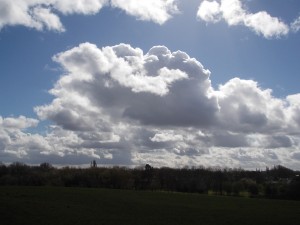
We had summer already. Yes, in March. It was baking hot for two weeks, then it ended as suddenly as it began. Then we had spring: the grass started to grow; the gooseberry bush is covered in its fresh green dress; the cherry trees in the streets are glowing with white and pink blossom; now the plum tree too is following with its delicate white flowers.
I grabbed my binoculars and went down to Wraysbury Lakes to see if any warblers had arrived. Even from the road I could hear a Chiffchaff singing; there were at least 10 singing around the lake, so plenty of migrant birds must have arrived to join any hardy overwinterers in the springtime. A Cetti’s Warbler, too, sang its loud brief song from the waterside. But no other warblers, yet; the chorus included a Song Thrush as well as the usual small birds, Great Tits making an odd rasping noise today (nothing like the typical ticha-ticha-ticha call), Robins, Dunnocks, Wrens, a Blackbird.
On the water, I had a surprise: there were two female Goldeneye still present, and a handsome male not far from them. Their biological clocks are still on the ‘Winter’ setting, clearly; their far northern breeding grounds guaranteed to be bitterly cold, devoid of food so early in the year. And near them, two pairs of Pochard, the handsomely rufous-headed males gleaming in the bright sunshine.
A loud splashing alerted me to the presence of an aggressive Mute Swan, its neck folded back, its wings raised threateningly; it had flown a short distance to warn off a rival male, which did its best to appear unconcerned. They both swam very fast, repeating the flying off a short distance (the rival) and noisily giving chase (the threatener) three times. Eventually the rival decided he had saved face enough, and flew off a hundred metres or so, leaving most of the lake to the victor.
I turned to walk on, and out of the blue sky came a minute’s hail, the grains about 5 mm across, pattering cleanly on to the ground. The wind freshened to force 4 from the southwest, feeling wintry on my ears; presumably up at Cumulus cloud level, the wind was strong enough to carry the hail some distance sideways from where it had formed.
